Will Pfeifer's Blog, page 5
December 3, 2018
Movies I Watched in October, Part 2
Don't think of this as a pathetically late October movie recap, think of it as a surprisingly early Christmas present...

After watching (and loving) “Suspiria,” I popped this Blu-ray into the player, because it was – I dunno? Another 1970s violent, offbeat horror movie by a foreign director with a title that started with an “S”? Because that’s just about all they have in common, except for the fact that they’re both damned good. This one is a little rougher around the edges than Argento’s masterwork, mostly because it was David Cronenberg’s first “real” movie after some bizarre (and decidedly non-commercial) earlier work. What’s amazing how much of what Cronenberg became famed for is already present in “Shivers”: sexual undercurrents (and over-currents); the idea that the monster is a disease and, what’s more, the disease is the “hero” of the film; a cool, almost clinical detachment; and the feeling that, even though it’s a movie about sex zombies, it’s a thoughtful, intelligent movie about sex zombies. Not for everyone, of course, and definitely absolutely not for the kiddies.
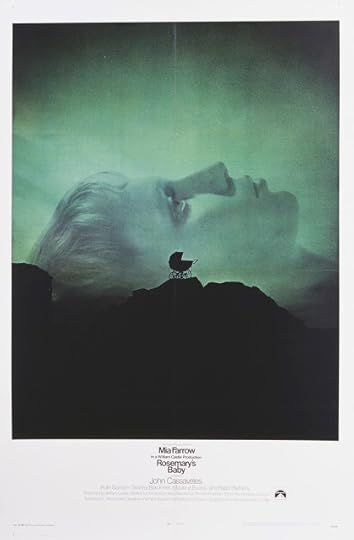
It’s great. One of my all-time favorite New York movies, horror movies and just plain movies in general. I wrote a lot more about it here .
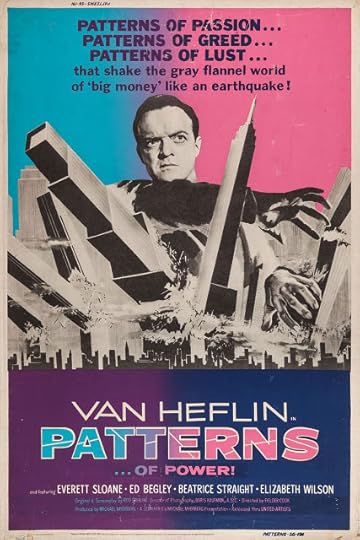
Compelling 1956 big-screen version of a TV drama that hit small screens a year earlier. Written by Rod Serling, it’s a tough-minded tale about a New York corporation that hires a bright-eyed eager executive (Van Heflin) to replace a friendly but past-his-prime VP (Ed Begley). Solid performances all around, especially from Everett Sloane (who played a much meeker guy 15 years earlier in “Citizen Kane”) as the ruthless president. It’s a fascinating look at a bygone era, but by the end, when Heflin and Sloane angrily put all their cards on the table, the tension is so thick I was half expecting them to kiss. (Spoiler alert: They don’t.)
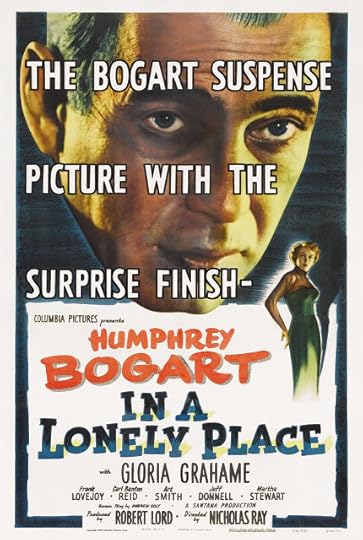
A hypnotic, low-key noir starring Humphrey Bogart as a mysterious screenwriter (named, ahem, “Dix Steele”) accused of killing a young woman. He’s cleared by the testimony of his equally mysterious neighbor (Gloria Grahame, who split from her husband, director Nicholas Ray, while both were working on this movie). Thing is, because Steele is such an edgy guy, you’re always wondering if maybe he really is a murderer after all. Apparently, Bogart was never wild about this movie, despite his top-notch, uncharacteristic performance (he felt the character was a little too close to the real Bogey), but that tension, combined with whatever weird vibes were bouncing back and forth between Ray and Grahame, give the movie a mature, intelligent feel that most other movies of the era – even the great noirs – tend to lack. If you’ve never seen it, this is the one to watch from this list. And Criterion has a gorgeous Blu-ray available, so you’ve got no excuse.
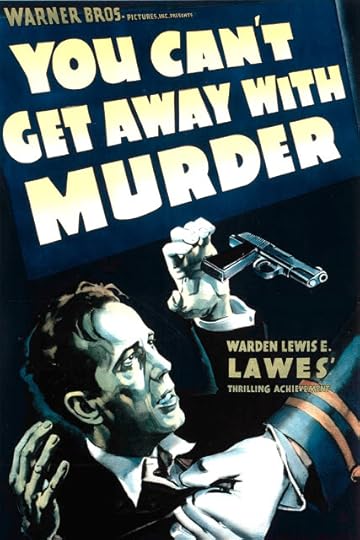
A much earlier, cornier Bogart movie – but still a lot of fun, especially if you’re a fan of old Warner Bros. crime melodramas. Bogart, still typecast as an unrepentant villain in this pre-“Maltese Falcon” era, gets a troubled young man (former Dead End Kid Billy Halop) arrested in a robbery. What’s worse, they use the gun belonging to his sister’s (Gale Page) boyfriend (Harvey Stephens). All three guys wind up in Sing Sing, but poor Harvey gets the death penalty. Naturally, there are jailbreaks, double-crosses and last-minute crises of conscience, and it all winds up in a perfectly neat little bow, with a dose of sober tragedy to remind the audience that crime, in fact, does not pay. It’s not great, but it’s fun, and the supporting cast includes Henry Travers and Frank Faylen (Clarence and Ernie from “It’s a Wonderful Life”) and Eddie “Rochester” Anderson from the Jack Benny show.
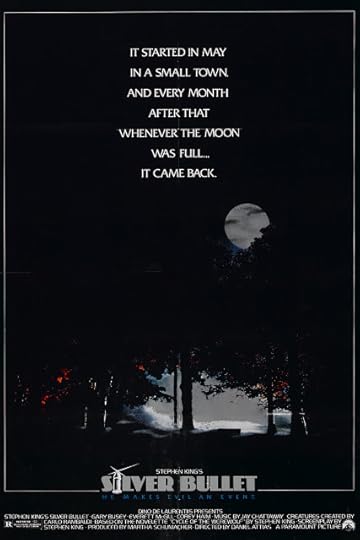
For some reason, I remembered enjoying this 1985 Stephen King adaptation when I saw it in a theater during my freshman year of college. Now, watching it 33 years later, I have no idea why. It’s slow, it’s not scary and the central concept – Corey Haim’s drunk uncle Gary Busey builds him a souped-up wheelchair (the titular “Silver Bullet”) and they team up for fight a werewolf – is just silly. Nice to see Everett McGill (Big Ed from “Twin Peaks”) as the monstrous minister, and after watching and re-watching the 1980s “Anne of Green Gables” series (actually quite good!) Amy and Allie were glad that Megan Follows, who played Anne, had a major role. But otherwise, it’s not good. Watch “Twin Peaks” or “Anne of Green Gables” instead. Trust me on this one.
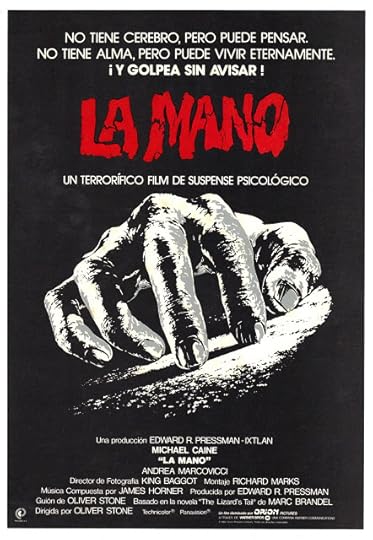 Released in America as "The Hand," this very early Oliver Stone (!) movie tells the story of a comic strip artist played by Michael Caine (!) who loses his hand in a freak accident (!) only to see the hand go on a murder spree (!) It’s as goofy as it sounds, but it’s also surprisingly well-made, with restrained direction from young Mr. Stone and a committed performance from Caine. Silly as hell, but what do you want in a story about a murderous hand? (Keep an eye out for Bruce “D-Day” McGill, Charles “Roger Rabbit” Fleisher and Tracey “Repo Man” Walter in supporting roles.)
Released in America as "The Hand," this very early Oliver Stone (!) movie tells the story of a comic strip artist played by Michael Caine (!) who loses his hand in a freak accident (!) only to see the hand go on a murder spree (!) It’s as goofy as it sounds, but it’s also surprisingly well-made, with restrained direction from young Mr. Stone and a committed performance from Caine. Silly as hell, but what do you want in a story about a murderous hand? (Keep an eye out for Bruce “D-Day” McGill, Charles “Roger Rabbit” Fleisher and Tracey “Repo Man” Walter in supporting roles.)

After watching (and loving) “Suspiria,” I popped this Blu-ray into the player, because it was – I dunno? Another 1970s violent, offbeat horror movie by a foreign director with a title that started with an “S”? Because that’s just about all they have in common, except for the fact that they’re both damned good. This one is a little rougher around the edges than Argento’s masterwork, mostly because it was David Cronenberg’s first “real” movie after some bizarre (and decidedly non-commercial) earlier work. What’s amazing how much of what Cronenberg became famed for is already present in “Shivers”: sexual undercurrents (and over-currents); the idea that the monster is a disease and, what’s more, the disease is the “hero” of the film; a cool, almost clinical detachment; and the feeling that, even though it’s a movie about sex zombies, it’s a thoughtful, intelligent movie about sex zombies. Not for everyone, of course, and definitely absolutely not for the kiddies.

It’s great. One of my all-time favorite New York movies, horror movies and just plain movies in general. I wrote a lot more about it here .

Compelling 1956 big-screen version of a TV drama that hit small screens a year earlier. Written by Rod Serling, it’s a tough-minded tale about a New York corporation that hires a bright-eyed eager executive (Van Heflin) to replace a friendly but past-his-prime VP (Ed Begley). Solid performances all around, especially from Everett Sloane (who played a much meeker guy 15 years earlier in “Citizen Kane”) as the ruthless president. It’s a fascinating look at a bygone era, but by the end, when Heflin and Sloane angrily put all their cards on the table, the tension is so thick I was half expecting them to kiss. (Spoiler alert: They don’t.)

A hypnotic, low-key noir starring Humphrey Bogart as a mysterious screenwriter (named, ahem, “Dix Steele”) accused of killing a young woman. He’s cleared by the testimony of his equally mysterious neighbor (Gloria Grahame, who split from her husband, director Nicholas Ray, while both were working on this movie). Thing is, because Steele is such an edgy guy, you’re always wondering if maybe he really is a murderer after all. Apparently, Bogart was never wild about this movie, despite his top-notch, uncharacteristic performance (he felt the character was a little too close to the real Bogey), but that tension, combined with whatever weird vibes were bouncing back and forth between Ray and Grahame, give the movie a mature, intelligent feel that most other movies of the era – even the great noirs – tend to lack. If you’ve never seen it, this is the one to watch from this list. And Criterion has a gorgeous Blu-ray available, so you’ve got no excuse.

A much earlier, cornier Bogart movie – but still a lot of fun, especially if you’re a fan of old Warner Bros. crime melodramas. Bogart, still typecast as an unrepentant villain in this pre-“Maltese Falcon” era, gets a troubled young man (former Dead End Kid Billy Halop) arrested in a robbery. What’s worse, they use the gun belonging to his sister’s (Gale Page) boyfriend (Harvey Stephens). All three guys wind up in Sing Sing, but poor Harvey gets the death penalty. Naturally, there are jailbreaks, double-crosses and last-minute crises of conscience, and it all winds up in a perfectly neat little bow, with a dose of sober tragedy to remind the audience that crime, in fact, does not pay. It’s not great, but it’s fun, and the supporting cast includes Henry Travers and Frank Faylen (Clarence and Ernie from “It’s a Wonderful Life”) and Eddie “Rochester” Anderson from the Jack Benny show.

For some reason, I remembered enjoying this 1985 Stephen King adaptation when I saw it in a theater during my freshman year of college. Now, watching it 33 years later, I have no idea why. It’s slow, it’s not scary and the central concept – Corey Haim’s drunk uncle Gary Busey builds him a souped-up wheelchair (the titular “Silver Bullet”) and they team up for fight a werewolf – is just silly. Nice to see Everett McGill (Big Ed from “Twin Peaks”) as the monstrous minister, and after watching and re-watching the 1980s “Anne of Green Gables” series (actually quite good!) Amy and Allie were glad that Megan Follows, who played Anne, had a major role. But otherwise, it’s not good. Watch “Twin Peaks” or “Anne of Green Gables” instead. Trust me on this one.
 Released in America as "The Hand," this very early Oliver Stone (!) movie tells the story of a comic strip artist played by Michael Caine (!) who loses his hand in a freak accident (!) only to see the hand go on a murder spree (!) It’s as goofy as it sounds, but it’s also surprisingly well-made, with restrained direction from young Mr. Stone and a committed performance from Caine. Silly as hell, but what do you want in a story about a murderous hand? (Keep an eye out for Bruce “D-Day” McGill, Charles “Roger Rabbit” Fleisher and Tracey “Repo Man” Walter in supporting roles.)
Released in America as "The Hand," this very early Oliver Stone (!) movie tells the story of a comic strip artist played by Michael Caine (!) who loses his hand in a freak accident (!) only to see the hand go on a murder spree (!) It’s as goofy as it sounds, but it’s also surprisingly well-made, with restrained direction from young Mr. Stone and a committed performance from Caine. Silly as hell, but what do you want in a story about a murderous hand? (Keep an eye out for Bruce “D-Day” McGill, Charles “Roger Rabbit” Fleisher and Tracey “Repo Man” Walter in supporting roles.)
Published on December 03, 2018 08:19
November 21, 2018
Movies I Watched in October, Part 1
I had grand plans for delivering more timely, more frequent movie reviews on this blog, but of course I blew the deadlines on that plan. So here, for October at least, is the multi-review roundup you've come to know and, I dunno, love?
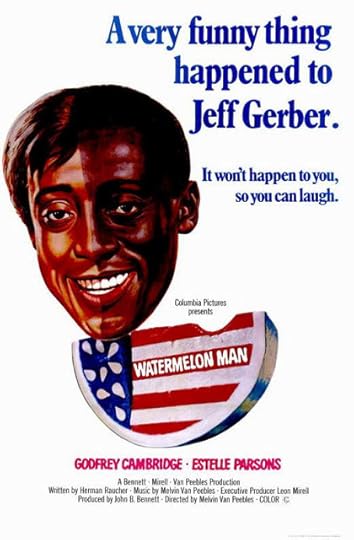 Before Melvin Van Peebles became a legend by producing/directing/writing/starring in the no-budget independent film classic “ Sweet Sweetback's Baadasssss Song,” he made this would-be comedy that was produced by Columbia and written by Herman Raucher, a guy best known for the decidedly white movie “Summer of ’42.” I don’t know what the script of this one was like originally, but by the time it hit the theaters (and left soon after) it was one of the strangest movies ever to come out of Hollywood. That’s not because of the premise, which is admittedly a little odd, but nowhere near as odd as the movie itself: A white insurance agent (played by African American comedian/actor Godfrey Cambridge) wakes up one morning to discover he’s turned black (and, incidentally, looks a million times more convincing than he did in the opening scenes, when Cambridge is wearing a white guy makeup). Naturally, this being 1970, this does not go over well with his wife (Estelle Parsons), his boss ( Howard Caine, best known as Major Hochstetter on “Hogan’s Heroes”) or pretty much every other character. It’s a strange premise, but not necessarily a bad one, and certainly one ripe for satire. Unfortunately, Peebles directs the entire film with a combination of sheer incompetence and infuriating artiness, leaving me wondering which bits of mis-staged action and awkward framing were intentional and which were simple mistakes. Even worse, Cambridge, who is low-key and excellent in movies like “The President’s Analyst” and “Cotton Comes to Harlem” is terrible here, overacting in almost every scene and making his character so obnoxious you don’t care what happens to him. On top of all that, the movie never finds a tone, wavering between slapstick comedy, grim satire and overheated drama. It’s worth watching – both for the sheer strangeness of the premise and the car crash quality of the execution. As a bonus, you can also have fun spotting such memorable performers as Mantan Moreland (of a million old movies), D’Urville Martin (of a million blaxploitation movies), Emil Sitka (of a million Three Stooges shorts), Paul Williams (of a million things in general) and Erin Moran (of “Joannie Loves Chachi). "Watermelon Man" isn't good in any sense of the word, but it is endlessly fascinating.
Before Melvin Van Peebles became a legend by producing/directing/writing/starring in the no-budget independent film classic “ Sweet Sweetback's Baadasssss Song,” he made this would-be comedy that was produced by Columbia and written by Herman Raucher, a guy best known for the decidedly white movie “Summer of ’42.” I don’t know what the script of this one was like originally, but by the time it hit the theaters (and left soon after) it was one of the strangest movies ever to come out of Hollywood. That’s not because of the premise, which is admittedly a little odd, but nowhere near as odd as the movie itself: A white insurance agent (played by African American comedian/actor Godfrey Cambridge) wakes up one morning to discover he’s turned black (and, incidentally, looks a million times more convincing than he did in the opening scenes, when Cambridge is wearing a white guy makeup). Naturally, this being 1970, this does not go over well with his wife (Estelle Parsons), his boss ( Howard Caine, best known as Major Hochstetter on “Hogan’s Heroes”) or pretty much every other character. It’s a strange premise, but not necessarily a bad one, and certainly one ripe for satire. Unfortunately, Peebles directs the entire film with a combination of sheer incompetence and infuriating artiness, leaving me wondering which bits of mis-staged action and awkward framing were intentional and which were simple mistakes. Even worse, Cambridge, who is low-key and excellent in movies like “The President’s Analyst” and “Cotton Comes to Harlem” is terrible here, overacting in almost every scene and making his character so obnoxious you don’t care what happens to him. On top of all that, the movie never finds a tone, wavering between slapstick comedy, grim satire and overheated drama. It’s worth watching – both for the sheer strangeness of the premise and the car crash quality of the execution. As a bonus, you can also have fun spotting such memorable performers as Mantan Moreland (of a million old movies), D’Urville Martin (of a million blaxploitation movies), Emil Sitka (of a million Three Stooges shorts), Paul Williams (of a million things in general) and Erin Moran (of “Joannie Loves Chachi). "Watermelon Man" isn't good in any sense of the word, but it is endlessly fascinating.
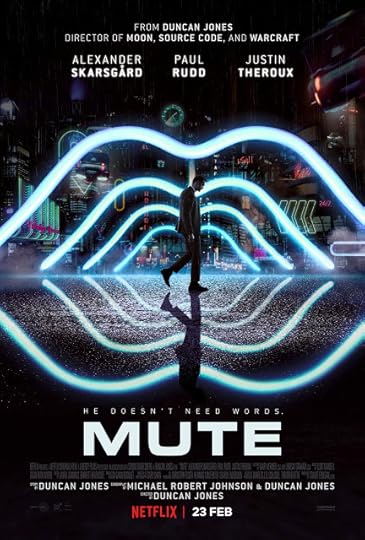
Impressive, ambitious sci-fi thriller from Duncan Jones, who brought us the excellent “Moon,” the less excellent “Source Code” and the much, much less excellent “Warcraft” (I’m assuming – I haven’t seen it). Here, Alexander Skarsgard plays Leo, a mute bartender trying to find out what happened to his partner. Naturally, this takes him deep into the seedy underbelly of this future city (which owes a certain debt to a certain movie named “Blade Runner”) and leads him to some pretty disturbing discoveries. It’s smartly made and features a rare villain turn from ultimate nice guy Paul Rudd, but the plot never quite gets going and things take an unnecessarily creepy turn toward the end. Great world-building, though. So good, in fact, it feels like the first episode of a series.
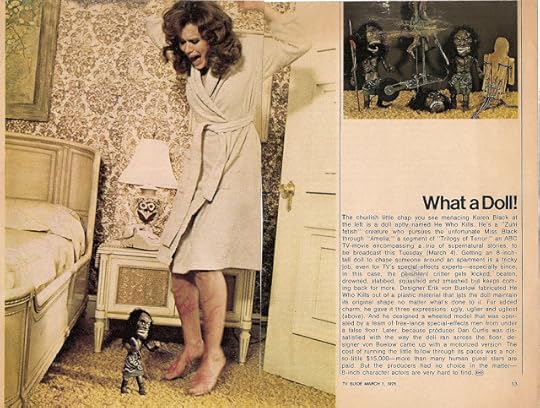
The only story in this trilogy that anyone talks about is the last one, and that’s for good reason: The first story (shy teacher Karen Black is really a witch) and the second story (two women played by Karen Black are really one woman) are dull, predictable and barely worth watching. But that third story – Karen Black is attacked by an African doll – is great, a genuinely scary, fun, tense exercise in nasty violence and well-staged terror. No wonder people still talk about that segment more than 40 years after the TV movie originally aired. By all means, check it out – and don’t feel bad about skipping the first two sections.
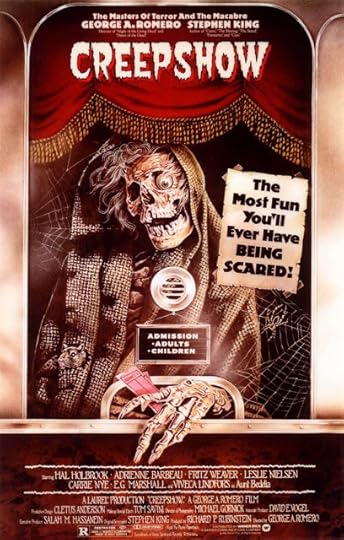
Another fondly-remembered anthology, it's never as boring as the first two tales in “Trilogy of Terror” but also never hits the heights of the third. Written by Stephen King, directly by George Romero and inspired by the classic EC horror comics, it’s mostly comedic, never scary and (sad to say) probably not quite as good as you remember. The solid cast includes Ted Danson, Leslie Nielsen, Hal Holbrook, Adrienne Barbeau, Stephen King and other game folks, but they’re overacting so much they come across as cartoon characters (which, come to think of it, was probably the point.) My pick for the best story? The one where E.G. Marshall really, really hates cockroaches …. And guess what happens to him!
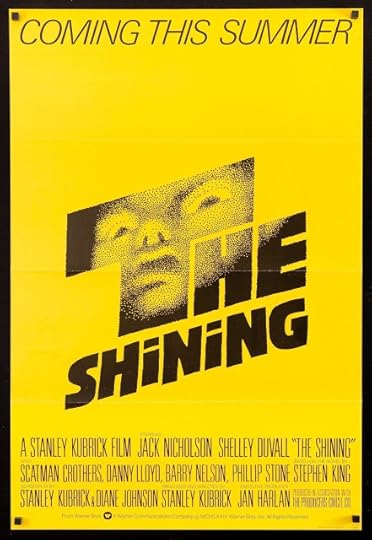
It’s great, obviously. An all-time classic. Showed it to Allie (who liked the “Shining” sections of “Ready Player One”) and though she admitted it was “scary,” she wasn’t terrified by any means. She was, however, very surprised by how Scatman Crothers’ elaborate rescue mission back to the Overlook ends. (I wrote a lot more about “The Shining” here , if you’re curious.)
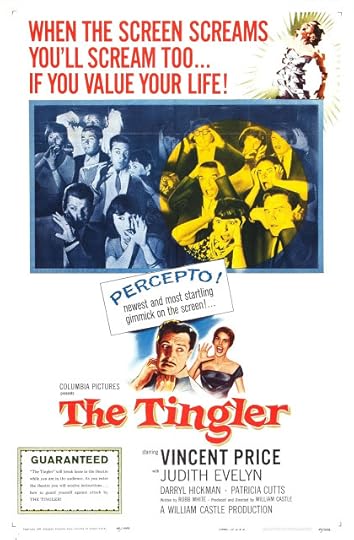
Rewatched this William Castle cult classic for the Halloween season, and though I love most of it for its wonderful patented Castle cheesiness, I was disappointed by the fact that it doesn’t so much end as just come to a stop. Still, Vincent Price is great (of course), the tingler monster is cheap but fun and the plot, which involves a creature that grows on everyone’s spine, LSD, a movie theater and several bickering couples, is never not interesting. I just wish it had an ending.
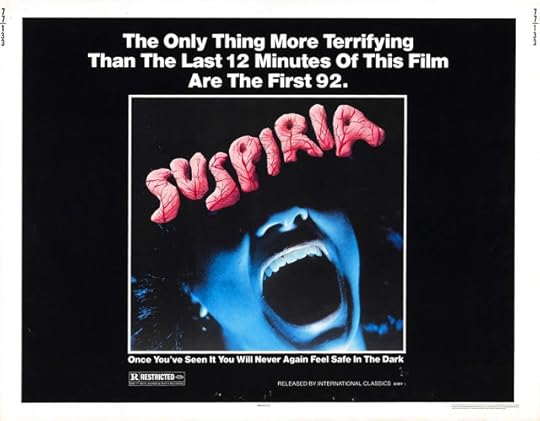 I’ve seen it before, and I watched it again mostly because (a) there’s that new remake out and (b) I never got around to watching my sweet, sweet Synapse Films Blu-ray. Boy, am I glad I put this one in the player. The gorgeous picture and booming soundtrack of the Blu-ray reminded me what a mind-blowing cinematic experience “Suspiria” is, and the fact that it barely has a plot is, as they used to say, a feature and not a bug. Director Dario Argento aims directly at the center of your brain, bypassing logic and character development and grabbing you with visuals and a legendary score (courtesy of Goblin). It’s impossible to pick a favorite scene – Jessica Harper’s arrival in German is breathtaking even though nothing much happens, and the elaborate first murder is justifiably praised for its colors and staging – but this time around, I really admired the long, tense chase through the school that suddenly ends in a room full of razor wire. Does it make even the slightest bit of sense? Of course not. Is it incredible? What do you think? By the way, that poster doesn't lie: The ending of the movie is slightly less jaw-dropping than the rest of the film ... but only slightly.
I’ve seen it before, and I watched it again mostly because (a) there’s that new remake out and (b) I never got around to watching my sweet, sweet Synapse Films Blu-ray. Boy, am I glad I put this one in the player. The gorgeous picture and booming soundtrack of the Blu-ray reminded me what a mind-blowing cinematic experience “Suspiria” is, and the fact that it barely has a plot is, as they used to say, a feature and not a bug. Director Dario Argento aims directly at the center of your brain, bypassing logic and character development and grabbing you with visuals and a legendary score (courtesy of Goblin). It’s impossible to pick a favorite scene – Jessica Harper’s arrival in German is breathtaking even though nothing much happens, and the elaborate first murder is justifiably praised for its colors and staging – but this time around, I really admired the long, tense chase through the school that suddenly ends in a room full of razor wire. Does it make even the slightest bit of sense? Of course not. Is it incredible? What do you think? By the way, that poster doesn't lie: The ending of the movie is slightly less jaw-dropping than the rest of the film ... but only slightly.
Up next: Cronenberg! Polanski! Some classic noir! And two really disappointing horror movies!
 Before Melvin Van Peebles became a legend by producing/directing/writing/starring in the no-budget independent film classic “ Sweet Sweetback's Baadasssss Song,” he made this would-be comedy that was produced by Columbia and written by Herman Raucher, a guy best known for the decidedly white movie “Summer of ’42.” I don’t know what the script of this one was like originally, but by the time it hit the theaters (and left soon after) it was one of the strangest movies ever to come out of Hollywood. That’s not because of the premise, which is admittedly a little odd, but nowhere near as odd as the movie itself: A white insurance agent (played by African American comedian/actor Godfrey Cambridge) wakes up one morning to discover he’s turned black (and, incidentally, looks a million times more convincing than he did in the opening scenes, when Cambridge is wearing a white guy makeup). Naturally, this being 1970, this does not go over well with his wife (Estelle Parsons), his boss ( Howard Caine, best known as Major Hochstetter on “Hogan’s Heroes”) or pretty much every other character. It’s a strange premise, but not necessarily a bad one, and certainly one ripe for satire. Unfortunately, Peebles directs the entire film with a combination of sheer incompetence and infuriating artiness, leaving me wondering which bits of mis-staged action and awkward framing were intentional and which were simple mistakes. Even worse, Cambridge, who is low-key and excellent in movies like “The President’s Analyst” and “Cotton Comes to Harlem” is terrible here, overacting in almost every scene and making his character so obnoxious you don’t care what happens to him. On top of all that, the movie never finds a tone, wavering between slapstick comedy, grim satire and overheated drama. It’s worth watching – both for the sheer strangeness of the premise and the car crash quality of the execution. As a bonus, you can also have fun spotting such memorable performers as Mantan Moreland (of a million old movies), D’Urville Martin (of a million blaxploitation movies), Emil Sitka (of a million Three Stooges shorts), Paul Williams (of a million things in general) and Erin Moran (of “Joannie Loves Chachi). "Watermelon Man" isn't good in any sense of the word, but it is endlessly fascinating.
Before Melvin Van Peebles became a legend by producing/directing/writing/starring in the no-budget independent film classic “ Sweet Sweetback's Baadasssss Song,” he made this would-be comedy that was produced by Columbia and written by Herman Raucher, a guy best known for the decidedly white movie “Summer of ’42.” I don’t know what the script of this one was like originally, but by the time it hit the theaters (and left soon after) it was one of the strangest movies ever to come out of Hollywood. That’s not because of the premise, which is admittedly a little odd, but nowhere near as odd as the movie itself: A white insurance agent (played by African American comedian/actor Godfrey Cambridge) wakes up one morning to discover he’s turned black (and, incidentally, looks a million times more convincing than he did in the opening scenes, when Cambridge is wearing a white guy makeup). Naturally, this being 1970, this does not go over well with his wife (Estelle Parsons), his boss ( Howard Caine, best known as Major Hochstetter on “Hogan’s Heroes”) or pretty much every other character. It’s a strange premise, but not necessarily a bad one, and certainly one ripe for satire. Unfortunately, Peebles directs the entire film with a combination of sheer incompetence and infuriating artiness, leaving me wondering which bits of mis-staged action and awkward framing were intentional and which were simple mistakes. Even worse, Cambridge, who is low-key and excellent in movies like “The President’s Analyst” and “Cotton Comes to Harlem” is terrible here, overacting in almost every scene and making his character so obnoxious you don’t care what happens to him. On top of all that, the movie never finds a tone, wavering between slapstick comedy, grim satire and overheated drama. It’s worth watching – both for the sheer strangeness of the premise and the car crash quality of the execution. As a bonus, you can also have fun spotting such memorable performers as Mantan Moreland (of a million old movies), D’Urville Martin (of a million blaxploitation movies), Emil Sitka (of a million Three Stooges shorts), Paul Williams (of a million things in general) and Erin Moran (of “Joannie Loves Chachi). "Watermelon Man" isn't good in any sense of the word, but it is endlessly fascinating.
Impressive, ambitious sci-fi thriller from Duncan Jones, who brought us the excellent “Moon,” the less excellent “Source Code” and the much, much less excellent “Warcraft” (I’m assuming – I haven’t seen it). Here, Alexander Skarsgard plays Leo, a mute bartender trying to find out what happened to his partner. Naturally, this takes him deep into the seedy underbelly of this future city (which owes a certain debt to a certain movie named “Blade Runner”) and leads him to some pretty disturbing discoveries. It’s smartly made and features a rare villain turn from ultimate nice guy Paul Rudd, but the plot never quite gets going and things take an unnecessarily creepy turn toward the end. Great world-building, though. So good, in fact, it feels like the first episode of a series.

The only story in this trilogy that anyone talks about is the last one, and that’s for good reason: The first story (shy teacher Karen Black is really a witch) and the second story (two women played by Karen Black are really one woman) are dull, predictable and barely worth watching. But that third story – Karen Black is attacked by an African doll – is great, a genuinely scary, fun, tense exercise in nasty violence and well-staged terror. No wonder people still talk about that segment more than 40 years after the TV movie originally aired. By all means, check it out – and don’t feel bad about skipping the first two sections.

Another fondly-remembered anthology, it's never as boring as the first two tales in “Trilogy of Terror” but also never hits the heights of the third. Written by Stephen King, directly by George Romero and inspired by the classic EC horror comics, it’s mostly comedic, never scary and (sad to say) probably not quite as good as you remember. The solid cast includes Ted Danson, Leslie Nielsen, Hal Holbrook, Adrienne Barbeau, Stephen King and other game folks, but they’re overacting so much they come across as cartoon characters (which, come to think of it, was probably the point.) My pick for the best story? The one where E.G. Marshall really, really hates cockroaches …. And guess what happens to him!

It’s great, obviously. An all-time classic. Showed it to Allie (who liked the “Shining” sections of “Ready Player One”) and though she admitted it was “scary,” she wasn’t terrified by any means. She was, however, very surprised by how Scatman Crothers’ elaborate rescue mission back to the Overlook ends. (I wrote a lot more about “The Shining” here , if you’re curious.)

Rewatched this William Castle cult classic for the Halloween season, and though I love most of it for its wonderful patented Castle cheesiness, I was disappointed by the fact that it doesn’t so much end as just come to a stop. Still, Vincent Price is great (of course), the tingler monster is cheap but fun and the plot, which involves a creature that grows on everyone’s spine, LSD, a movie theater and several bickering couples, is never not interesting. I just wish it had an ending.
 I’ve seen it before, and I watched it again mostly because (a) there’s that new remake out and (b) I never got around to watching my sweet, sweet Synapse Films Blu-ray. Boy, am I glad I put this one in the player. The gorgeous picture and booming soundtrack of the Blu-ray reminded me what a mind-blowing cinematic experience “Suspiria” is, and the fact that it barely has a plot is, as they used to say, a feature and not a bug. Director Dario Argento aims directly at the center of your brain, bypassing logic and character development and grabbing you with visuals and a legendary score (courtesy of Goblin). It’s impossible to pick a favorite scene – Jessica Harper’s arrival in German is breathtaking even though nothing much happens, and the elaborate first murder is justifiably praised for its colors and staging – but this time around, I really admired the long, tense chase through the school that suddenly ends in a room full of razor wire. Does it make even the slightest bit of sense? Of course not. Is it incredible? What do you think? By the way, that poster doesn't lie: The ending of the movie is slightly less jaw-dropping than the rest of the film ... but only slightly.
I’ve seen it before, and I watched it again mostly because (a) there’s that new remake out and (b) I never got around to watching my sweet, sweet Synapse Films Blu-ray. Boy, am I glad I put this one in the player. The gorgeous picture and booming soundtrack of the Blu-ray reminded me what a mind-blowing cinematic experience “Suspiria” is, and the fact that it barely has a plot is, as they used to say, a feature and not a bug. Director Dario Argento aims directly at the center of your brain, bypassing logic and character development and grabbing you with visuals and a legendary score (courtesy of Goblin). It’s impossible to pick a favorite scene – Jessica Harper’s arrival in German is breathtaking even though nothing much happens, and the elaborate first murder is justifiably praised for its colors and staging – but this time around, I really admired the long, tense chase through the school that suddenly ends in a room full of razor wire. Does it make even the slightest bit of sense? Of course not. Is it incredible? What do you think? By the way, that poster doesn't lie: The ending of the movie is slightly less jaw-dropping than the rest of the film ... but only slightly.Up next: Cronenberg! Polanski! Some classic noir! And two really disappointing horror movies!
Published on November 21, 2018 11:20
October 28, 2018
Just in time for Halloween, 10 Great Color Horror Movies
Old movie nerd that I am, whenever I create some self-obsessed list of films on this blog, it tends to skew black-and-white. I'm not apologizing for that, after watching a certain movie on this list again (Number 2) it reminded me how much color can add to a horror movie. So, just in time for that holiday that's looming, here's a list of 10 great horror movies (in no particular order) that use all (most? some?) of the hues of the rainbow. Happy Halloween!
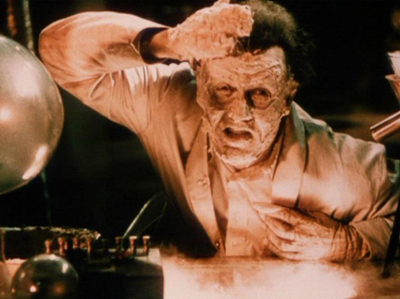
Doctor X (1933) Sure, it's just two-strip Technicolor, but that makes it feel even creepier. Bonus points for starring Lee Tracy as a wise-cracking reporter.
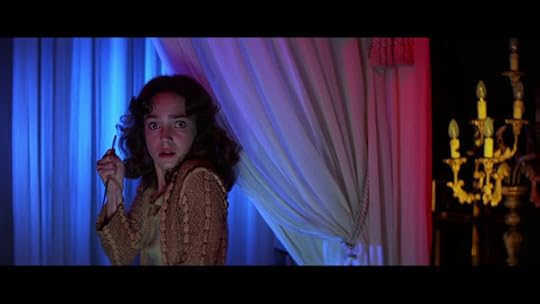
Suspiria (1977) The use of color, sound and music is so jaw-dropping the lack of a plot hardly even matters. I'm curious about the new remake, but it'll have to be pretty amazing to equal Dario Argento's original.
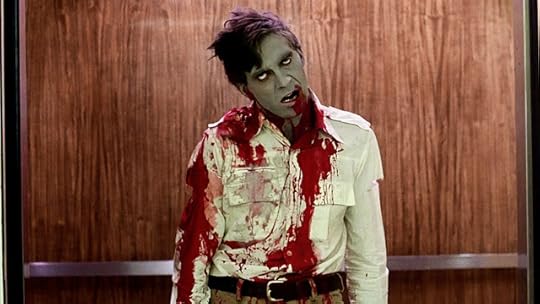
Dawn of the Dead (1978) After the nightmarish (and nighttime) chills of "Night of the Living Dead," George Romero's sequel upped the gore exponentially -- and bathed it all in bright fluorescent light.

Texas Chainsaw Massacre (1974) Scary as hell, surprisingly restrained, and great use of color -- especially red (and not just for blood).
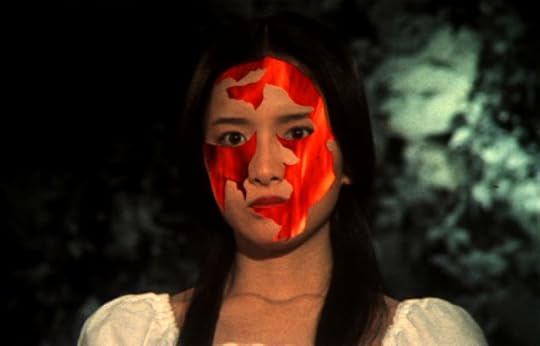
House/Hausu (1977) The craziest movie on this list, which is saying something. Like a cartoon come to horrifying, hilarious life.
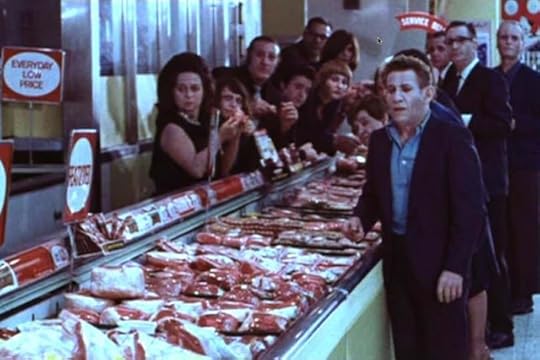
Messiah of Evil (1973) The best movie on this list that you've never heard of. Uses banal settings (theaters, grocery stores) to generate genuine unease and terror.
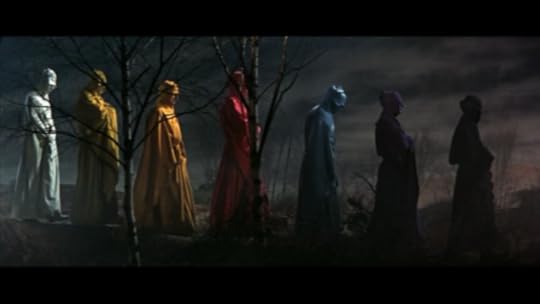
Masque of the Red Death (1964) One of the best movies Roger Corman ever made, and definitely the best-looking. Jaw-dropping use of color, thanks in large part to cinematographer Nicolas Roeg.
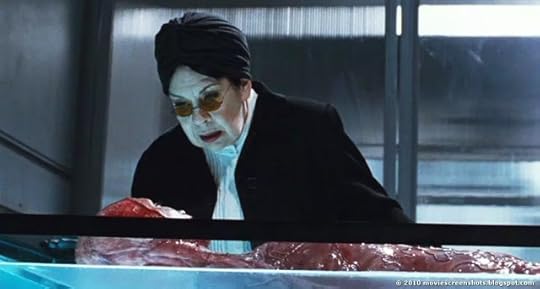
Martyrs (2008) It blew me away when I first watched it, years ago, but I don't know if I'll ever watch it again. It's the roughest movie on this list, which is saying something. Icy cold colors except for powerful shots of flesh and blood (and muscle and bone and ...)
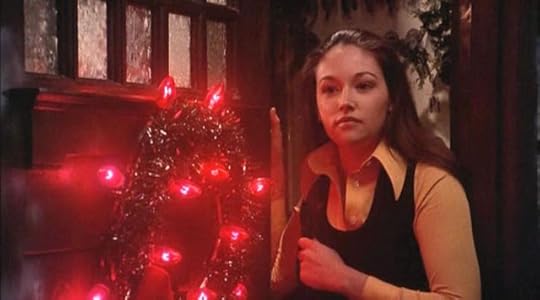
Black Christmas (1974) I know it's blasphemous to say so, but I like it better than "Halloween." Great use of holiday colors in dark, ominous settings.
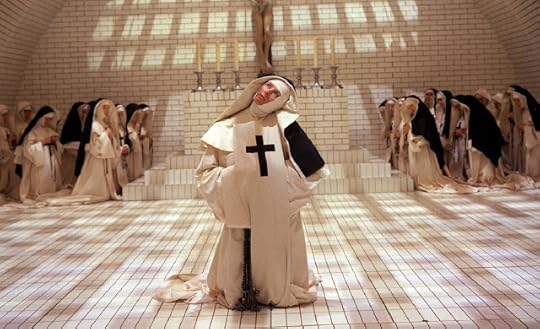
The Devils (1971) And finally, the movie so controversial that it still, almost 50 years later, isn't officially available in its original, uncut form. Also, maybe the best use of black and white in a color movie ever (thanks to director Ken Russell, cinematographer David Watkin and production designer Derek Jarman).

Doctor X (1933) Sure, it's just two-strip Technicolor, but that makes it feel even creepier. Bonus points for starring Lee Tracy as a wise-cracking reporter.

Suspiria (1977) The use of color, sound and music is so jaw-dropping the lack of a plot hardly even matters. I'm curious about the new remake, but it'll have to be pretty amazing to equal Dario Argento's original.

Dawn of the Dead (1978) After the nightmarish (and nighttime) chills of "Night of the Living Dead," George Romero's sequel upped the gore exponentially -- and bathed it all in bright fluorescent light.

Texas Chainsaw Massacre (1974) Scary as hell, surprisingly restrained, and great use of color -- especially red (and not just for blood).

House/Hausu (1977) The craziest movie on this list, which is saying something. Like a cartoon come to horrifying, hilarious life.

Messiah of Evil (1973) The best movie on this list that you've never heard of. Uses banal settings (theaters, grocery stores) to generate genuine unease and terror.

Masque of the Red Death (1964) One of the best movies Roger Corman ever made, and definitely the best-looking. Jaw-dropping use of color, thanks in large part to cinematographer Nicolas Roeg.

Martyrs (2008) It blew me away when I first watched it, years ago, but I don't know if I'll ever watch it again. It's the roughest movie on this list, which is saying something. Icy cold colors except for powerful shots of flesh and blood (and muscle and bone and ...)

Black Christmas (1974) I know it's blasphemous to say so, but I like it better than "Halloween." Great use of holiday colors in dark, ominous settings.

The Devils (1971) And finally, the movie so controversial that it still, almost 50 years later, isn't officially available in its original, uncut form. Also, maybe the best use of black and white in a color movie ever (thanks to director Ken Russell, cinematographer David Watkin and production designer Derek Jarman).
Published on October 28, 2018 10:18
October 21, 2018
Moves I Watched in September
Here's the deal: I want to change-up the way I do these movie recaps to make them (a) more timely and (b) more frequent, so I'm going to whip through the September rundown right now in one fell swoop, then zip straight into October in the next post. Ready? Here goes...
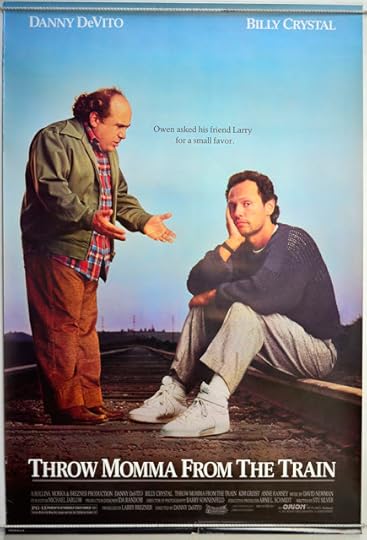
In part of our never-ending quest to find non-kids movies to show Allie (now that she's a non-kid herself), we dug up this 1987 comedy that, of course, is a pastiche/ripoff/tribute to Hitchcock's classic "Strangers on a Train." I saw it in college and remember enjoying it, way back when. This time around? Not so much. Danny DeVito (who also directed) and Anne Ramsey (as the titular "Momma") are both a lot of fun. Trouble is, Billy Crystal is almost unbearable with his constant whining and would-be wisecracking, and as his love interest, Kim Greist brings the same personality vacuum that she brought to "Brazil" a few years earlier. Plus, Oprah has a cameo. Ugh.
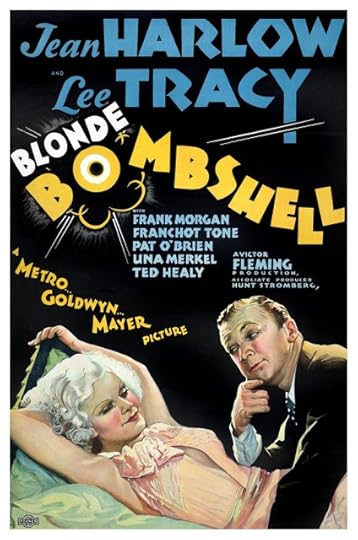
Solid pre-Code comedy about a movie star (Jean Harlow) who's pressured on all sides by her studio, her gold-bricking family and assorted other Hollywood headaches. Harlow is perfect as the slowly frazzling center of attention, but the show is stolen (as many of these pre-Coders are) by the great Lee Tracy, who plays her completely amoral press agent. It's fascinating (and funny) to watch how gleefully he wrecks Harlow's life just to get her name in the papers. (And supposedly, this movie was loosely based on the story of none other than Clara Bow.) The strong cast also includes Franchot Tone, Ted Healy, Frank Morgan (the Wizard of Oz himself), Pat O'Brien and Una Merkel. As a bonus, you also get Louise Beavers who plays a maid (of course), but manages to suggest a whole life outside her job with this surprising exchange (please excuse the vintage 1933 dialect):
Harlow: Hey, I didn't give you that for a negligee. It's an evening wrap.
Beavers: I know, Miss Lola, but the negligee what you give me got all tore up, night before last.
Harlow: Your day off is sure brutal on your lingerie!
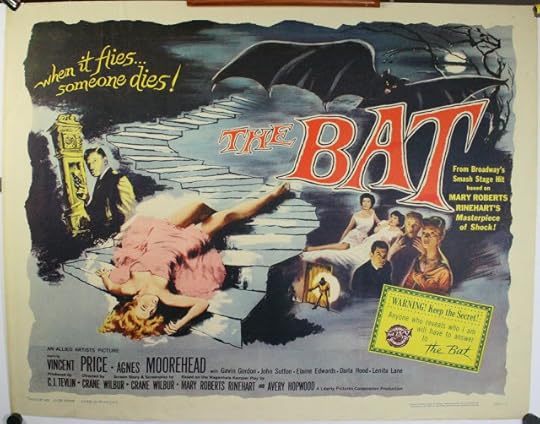
So-so thriller that feels like a William Castle movie of the same era, but lacks the zip and zing that Castle brought to even his most average offerings. This is a remake of "The Bat Whispers," a fascinating 1930 film that features some jaw-dropping miniature work. This version lacks all of that, along with, to be honest, much excitement at all. Solid cast, though, including Vincent Price and Agnes Moorehead plus ex-Little Rascal Darla Hood in what I think is her only adult role. Spoiler alert: She gets killed by the mysterious "Bat," but this is the sort of emotion-deficient movie where a whole bunch of people die and no one seems to react much at all. Odds are, you won't either.
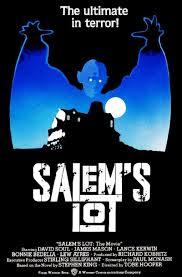
Technically a TV mini-series and not a movie, but this close to Halloween, who's counting? It's still pretty effective despite the late-70s vibe, with director Tobe Hooper (Mr. Texas Chainsaw Massacre himself) taking his time to put all the pieces on the chessboard so when the spooky stuff starts happening, it has an impressive impact. James Mason is damn near perfect as Straker, the vampire's assistant, but the rest of the cast really works well, too, especially David Soul, Bonnie Bedelia and Lance Kerwin in the lead heroic roles, supporting stalwarts George Dzundza, Ed Flanders and Geoffrey Lewis in support and even Hollywood legends Lew Ayres and Elisha Cook Jr. adding to the fun. Plus, even though it was a TV movie, it generates a real feeling of dread (Tobe Hooper's speciality) and delivers more than a few genuine scares. "It" gets all the retro love, but this is such a better Stephen King TV miniseries that there's really no comparison.
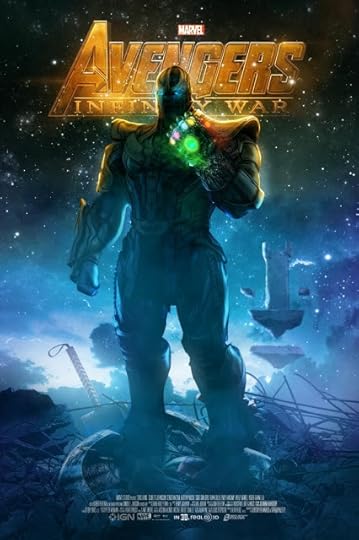
You've seen it. I've seen it. And I've written about it before. Here, for instance.
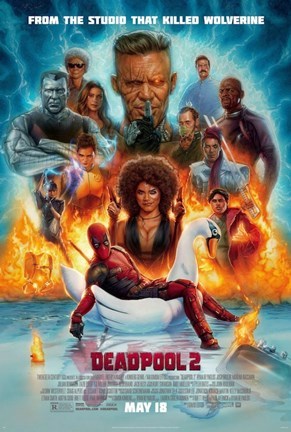
And last, but definitely not least, another Marvel movie, but one pretty different than "Avengers: Infinity War." (For one thing, the entire fate of the universe is not, in fact, at stake.) I was surprised how much I enjoyed the first "Deadpool" movie, having exactly no relationship with or knowledge of the character. And, though I might change my mind, I think I liked this one even better. With the origin out of the way, we can move right on to the story, a violent (of course) profane (of course) romp about a time-traveling killer looking to murder a troubled young mutant. As Cable, the aforementioned time-traveling killer (another character I didn't know or care about), Josh Brolin brings a genuine sense of pathos and gravity, acting as an effective counterpart to Deadpool's (Ryan Reynolds, of course) constant wisecracking. Plus you get Julian Dennison (from "Hunt for the Wilder People") as the young mutant, Zazie Beetz as the preternaturally lucky Domino, and Rob Delaney and Terry Crews as members of the ill-fated mutant team, X-Factor. (That plotline was probably my favorite bit.) And am I wrong to think that these movies, with Colossus, Negasonic Teenage Warhead and a surprising cameo from the other folks at Xavier's School, are the best cinematic treatment of the X-Men? By the way, stick around for the end credits for some funny time-traveling bits and to learn which no-kidding giant actual mega-movie star played the invisible X-Factor member Vanisher.
So that's it for September. I'm going to be rolling out October's movies as soon as I can, in shorter (timelier?) posts. First up? An insane 1970 comedy (?) about a white man who turns black. How insane is it? The race-swap is the least crazy part of the movie.

In part of our never-ending quest to find non-kids movies to show Allie (now that she's a non-kid herself), we dug up this 1987 comedy that, of course, is a pastiche/ripoff/tribute to Hitchcock's classic "Strangers on a Train." I saw it in college and remember enjoying it, way back when. This time around? Not so much. Danny DeVito (who also directed) and Anne Ramsey (as the titular "Momma") are both a lot of fun. Trouble is, Billy Crystal is almost unbearable with his constant whining and would-be wisecracking, and as his love interest, Kim Greist brings the same personality vacuum that she brought to "Brazil" a few years earlier. Plus, Oprah has a cameo. Ugh.

Solid pre-Code comedy about a movie star (Jean Harlow) who's pressured on all sides by her studio, her gold-bricking family and assorted other Hollywood headaches. Harlow is perfect as the slowly frazzling center of attention, but the show is stolen (as many of these pre-Coders are) by the great Lee Tracy, who plays her completely amoral press agent. It's fascinating (and funny) to watch how gleefully he wrecks Harlow's life just to get her name in the papers. (And supposedly, this movie was loosely based on the story of none other than Clara Bow.) The strong cast also includes Franchot Tone, Ted Healy, Frank Morgan (the Wizard of Oz himself), Pat O'Brien and Una Merkel. As a bonus, you also get Louise Beavers who plays a maid (of course), but manages to suggest a whole life outside her job with this surprising exchange (please excuse the vintage 1933 dialect):
Harlow: Hey, I didn't give you that for a negligee. It's an evening wrap.
Beavers: I know, Miss Lola, but the negligee what you give me got all tore up, night before last.
Harlow: Your day off is sure brutal on your lingerie!

So-so thriller that feels like a William Castle movie of the same era, but lacks the zip and zing that Castle brought to even his most average offerings. This is a remake of "The Bat Whispers," a fascinating 1930 film that features some jaw-dropping miniature work. This version lacks all of that, along with, to be honest, much excitement at all. Solid cast, though, including Vincent Price and Agnes Moorehead plus ex-Little Rascal Darla Hood in what I think is her only adult role. Spoiler alert: She gets killed by the mysterious "Bat," but this is the sort of emotion-deficient movie where a whole bunch of people die and no one seems to react much at all. Odds are, you won't either.

Technically a TV mini-series and not a movie, but this close to Halloween, who's counting? It's still pretty effective despite the late-70s vibe, with director Tobe Hooper (Mr. Texas Chainsaw Massacre himself) taking his time to put all the pieces on the chessboard so when the spooky stuff starts happening, it has an impressive impact. James Mason is damn near perfect as Straker, the vampire's assistant, but the rest of the cast really works well, too, especially David Soul, Bonnie Bedelia and Lance Kerwin in the lead heroic roles, supporting stalwarts George Dzundza, Ed Flanders and Geoffrey Lewis in support and even Hollywood legends Lew Ayres and Elisha Cook Jr. adding to the fun. Plus, even though it was a TV movie, it generates a real feeling of dread (Tobe Hooper's speciality) and delivers more than a few genuine scares. "It" gets all the retro love, but this is such a better Stephen King TV miniseries that there's really no comparison.

You've seen it. I've seen it. And I've written about it before. Here, for instance.

And last, but definitely not least, another Marvel movie, but one pretty different than "Avengers: Infinity War." (For one thing, the entire fate of the universe is not, in fact, at stake.) I was surprised how much I enjoyed the first "Deadpool" movie, having exactly no relationship with or knowledge of the character. And, though I might change my mind, I think I liked this one even better. With the origin out of the way, we can move right on to the story, a violent (of course) profane (of course) romp about a time-traveling killer looking to murder a troubled young mutant. As Cable, the aforementioned time-traveling killer (another character I didn't know or care about), Josh Brolin brings a genuine sense of pathos and gravity, acting as an effective counterpart to Deadpool's (Ryan Reynolds, of course) constant wisecracking. Plus you get Julian Dennison (from "Hunt for the Wilder People") as the young mutant, Zazie Beetz as the preternaturally lucky Domino, and Rob Delaney and Terry Crews as members of the ill-fated mutant team, X-Factor. (That plotline was probably my favorite bit.) And am I wrong to think that these movies, with Colossus, Negasonic Teenage Warhead and a surprising cameo from the other folks at Xavier's School, are the best cinematic treatment of the X-Men? By the way, stick around for the end credits for some funny time-traveling bits and to learn which no-kidding giant actual mega-movie star played the invisible X-Factor member Vanisher.
So that's it for September. I'm going to be rolling out October's movies as soon as I can, in shorter (timelier?) posts. First up? An insane 1970 comedy (?) about a white man who turns black. How insane is it? The race-swap is the least crazy part of the movie.
Published on October 21, 2018 15:53
October 8, 2018
Movies I Watched in August, Part 2
Wrapping things up for the much-overdue August recap. Look for the September movies soon, because I've got an plan that might make these reviews a tad more current...
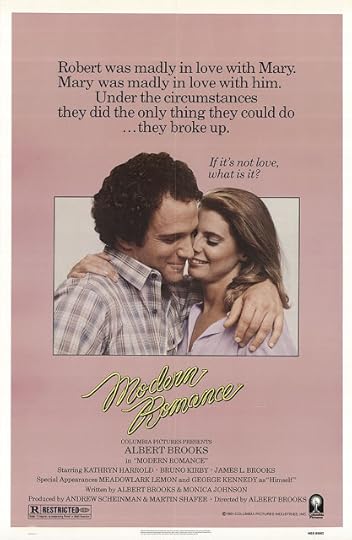
Rumor has it this was one of Stanley Kubrick’s favorite movies, and it’s not hard to see why. Though it’s a comedy – and a hilarious one – it’s also an oft-excruciating vivisection of, as the title says, modern romance, circa 1981. Albert Brooks stars, directs and co-writes (with Monica Johnson) the story of Robert Cole, a Hollywood editor stuck in an on-again, off-again, on-again, etc. relationship with the much more stable Mary Harvard (Kathryn Harrold). It’s deceptively low-key and simple, with no crazy plot twists to get in the way of Brooks’ breathtakingly neurotic (and endless) worrying. The movie starts with Brooks confidently dumping her, then charts his descent into madness as he schemes to get her back. Though it’s packed with some telltale ‘80s elements – Quaaludes, jogging, cocaine at parties – it’s oddly timeless in its themes of obsession, desire and insecurity. Most of all, like I said, it’s truly hilarious, possibly Brooks’ most consistently funny film (which is really saying something). Even beyond the relationship stuff, there’s also a very funny scene where Bob Einstein (aka Marty Funkhouser, aka Brooks’ big brother) pressures Albert into buying way too much jogging paraphernalia and some classic sequences involving the editing work, with wonderful support from Bruno Kirby, James L. Brooks and, believe it or not, George Kennedy. One of the great comedies of the 1980s, to be sure, and probably all time.
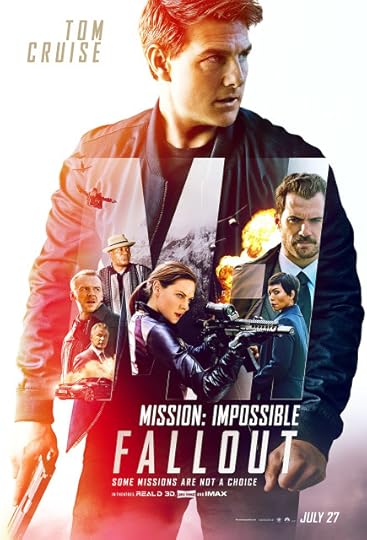
It’s always risky to make a statement like this about a movie, especially when it’s practically brand-new, but I honestly thing this might be one of the best action films I’ve ever seen. It’s packed with jaw-dropping sequences, including a fight in a bathroom that ranks with some of the best close-quarter combat of all time (and even remembers to include a crucial plot point about a mask-making device). Most of the hype surrounding “Mission: Impossible – Fallout” involved star Tom Cruise’s almost extra-human dedication to the film, performing death-defying stunts and working tirelessly to make the movie succeed. Though I’m skeptical of Cruise’s involvement with a certain religion, there’s no denying he really makes this movie something special. It’s more than the stunts and action scenes, though, and by the time we got to the (truly spectacular) helicopter chase that ends the film, I think I realized what it is: Cruise’s character, Ethan Hunt, has an almost supernatural confidence that, somehow, doesn’t come across as arrogant. It’s simply a belief that he can (and will) save the day, not matter how the odds are stacked against him (and, of course, by the end, they’re stacked pretty damned high). It’s like Kirk in “Wrath of Khan” – he just doesn’t believe in the no-win scenario. It sounds silly, and maybe it is, but by the time he’s hanging from a rope under a speeding helicopter, I was 100 percent with him.
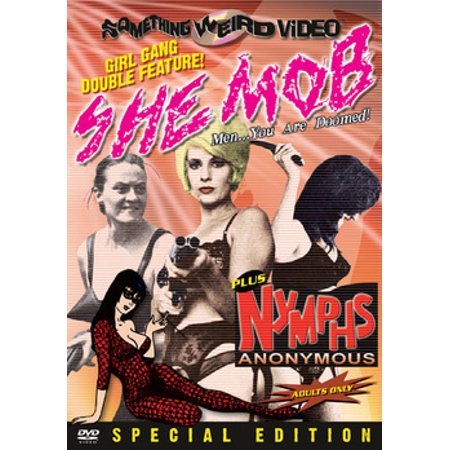
If there were any justice in this world, the fine folks at Something Weird Video would win one of those honorary Oscars for their contribution to film history, namely saving (and releasing) hundreds of insanely obscure, insanely strange movies that otherwise would never see the light of day. For instance, this 1968 sexploitation non-classic about a sketchy lesbian gang that kidnaps the boy-toy of a rich woman, who hires a private eye to track him down. As is usually the case, the plot itself if a fragile skeleton upon which the filmmakers (writer Diana Paschal and uncredited director Harry Wuest) hang endless scenes of semi-nude dancing, semi-nude wrestling and other semi-nude activities. It’s a terrible movie by any sane, objective measure, but it is fascinating if you’re a fan of these things. The whole movie, with it’s out-of-nowhere violence and girl gang aesthetic, resembles a bargain-basement version of a Russ Meyer movie – though it's nowhere near as good. And special credit must be given to actress Marni Castle, who plays both Brenda McClain (the aforementioned wealthy woman) and girl gang leader “Big Shim.” She’s not exactly talented, but she is oddly convincing, especially as the grotesque, imposing “Big Shim.”
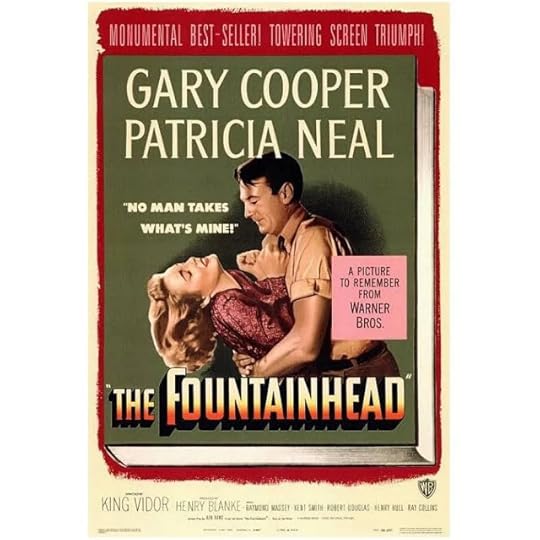
Ayn Rand’s philosophy is silly, and this movie is even sillier, but thanks to a great cast and some eye-popping direction by King Vidor (which, come to think of it, sounds like the name of an Ayn Rand character), this might be one of the most purely entertaining movies of Hollywood’s golden age. Gary Cooper plays Howard Roark, put-upon architect who refuses to bend to the whims of the masses. Patricia Neal plays Dominque Francon, Randian woman who refuses to be tamed (unless Roark is the one taming her). And, rounding out the holier-than-thou trilogy, Raymond Massey plays Gail Wynand, the oddly named, oddly motivated newspaper publisher who seemingly lusts after both of them. Add to that trio the movie’s wonderful pair of weasels – Roark’s weak-willed buddy Peter Keating (Kent Smith of “Cat People”) and scheming columnist Ellsworth Toohey (Robert Douglas, in a hilariously scenery chewing performance). You can barely believe what’s happening and how these decidedly non-human characters are reacting, but you also can’t look away – it’s so damned much fun. Until someone does a big-budget, black-and-white adaptation of Steve Ditko’s “Mr. A,” it’s going to remain unique in movie history.
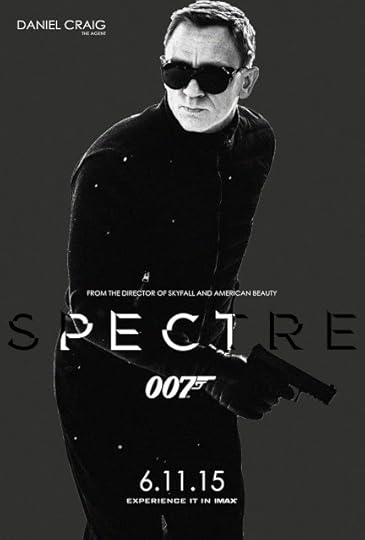
Rewatched this with my old Out of Theaters co-host BillyKulpa, and we were both amazed by just how disappointing it was. I like Daniel Craig, and I loved “Skyfall,” but this one, woof. It just didn’t hold our interest, which is the bare minimum I require in a James Bond movie. (Even "Tomorrow Never Dies" managed that simple trick.) Let’s hope the next one is a big improvement. (Nice poster, though.)
Coming up soon: Frank Reynolds! Lee Tracy! Darla Hood (as an adult)! David Soul! And a Marvel double feature!

Rumor has it this was one of Stanley Kubrick’s favorite movies, and it’s not hard to see why. Though it’s a comedy – and a hilarious one – it’s also an oft-excruciating vivisection of, as the title says, modern romance, circa 1981. Albert Brooks stars, directs and co-writes (with Monica Johnson) the story of Robert Cole, a Hollywood editor stuck in an on-again, off-again, on-again, etc. relationship with the much more stable Mary Harvard (Kathryn Harrold). It’s deceptively low-key and simple, with no crazy plot twists to get in the way of Brooks’ breathtakingly neurotic (and endless) worrying. The movie starts with Brooks confidently dumping her, then charts his descent into madness as he schemes to get her back. Though it’s packed with some telltale ‘80s elements – Quaaludes, jogging, cocaine at parties – it’s oddly timeless in its themes of obsession, desire and insecurity. Most of all, like I said, it’s truly hilarious, possibly Brooks’ most consistently funny film (which is really saying something). Even beyond the relationship stuff, there’s also a very funny scene where Bob Einstein (aka Marty Funkhouser, aka Brooks’ big brother) pressures Albert into buying way too much jogging paraphernalia and some classic sequences involving the editing work, with wonderful support from Bruno Kirby, James L. Brooks and, believe it or not, George Kennedy. One of the great comedies of the 1980s, to be sure, and probably all time.

It’s always risky to make a statement like this about a movie, especially when it’s practically brand-new, but I honestly thing this might be one of the best action films I’ve ever seen. It’s packed with jaw-dropping sequences, including a fight in a bathroom that ranks with some of the best close-quarter combat of all time (and even remembers to include a crucial plot point about a mask-making device). Most of the hype surrounding “Mission: Impossible – Fallout” involved star Tom Cruise’s almost extra-human dedication to the film, performing death-defying stunts and working tirelessly to make the movie succeed. Though I’m skeptical of Cruise’s involvement with a certain religion, there’s no denying he really makes this movie something special. It’s more than the stunts and action scenes, though, and by the time we got to the (truly spectacular) helicopter chase that ends the film, I think I realized what it is: Cruise’s character, Ethan Hunt, has an almost supernatural confidence that, somehow, doesn’t come across as arrogant. It’s simply a belief that he can (and will) save the day, not matter how the odds are stacked against him (and, of course, by the end, they’re stacked pretty damned high). It’s like Kirk in “Wrath of Khan” – he just doesn’t believe in the no-win scenario. It sounds silly, and maybe it is, but by the time he’s hanging from a rope under a speeding helicopter, I was 100 percent with him.

If there were any justice in this world, the fine folks at Something Weird Video would win one of those honorary Oscars for their contribution to film history, namely saving (and releasing) hundreds of insanely obscure, insanely strange movies that otherwise would never see the light of day. For instance, this 1968 sexploitation non-classic about a sketchy lesbian gang that kidnaps the boy-toy of a rich woman, who hires a private eye to track him down. As is usually the case, the plot itself if a fragile skeleton upon which the filmmakers (writer Diana Paschal and uncredited director Harry Wuest) hang endless scenes of semi-nude dancing, semi-nude wrestling and other semi-nude activities. It’s a terrible movie by any sane, objective measure, but it is fascinating if you’re a fan of these things. The whole movie, with it’s out-of-nowhere violence and girl gang aesthetic, resembles a bargain-basement version of a Russ Meyer movie – though it's nowhere near as good. And special credit must be given to actress Marni Castle, who plays both Brenda McClain (the aforementioned wealthy woman) and girl gang leader “Big Shim.” She’s not exactly talented, but she is oddly convincing, especially as the grotesque, imposing “Big Shim.”

Ayn Rand’s philosophy is silly, and this movie is even sillier, but thanks to a great cast and some eye-popping direction by King Vidor (which, come to think of it, sounds like the name of an Ayn Rand character), this might be one of the most purely entertaining movies of Hollywood’s golden age. Gary Cooper plays Howard Roark, put-upon architect who refuses to bend to the whims of the masses. Patricia Neal plays Dominque Francon, Randian woman who refuses to be tamed (unless Roark is the one taming her). And, rounding out the holier-than-thou trilogy, Raymond Massey plays Gail Wynand, the oddly named, oddly motivated newspaper publisher who seemingly lusts after both of them. Add to that trio the movie’s wonderful pair of weasels – Roark’s weak-willed buddy Peter Keating (Kent Smith of “Cat People”) and scheming columnist Ellsworth Toohey (Robert Douglas, in a hilariously scenery chewing performance). You can barely believe what’s happening and how these decidedly non-human characters are reacting, but you also can’t look away – it’s so damned much fun. Until someone does a big-budget, black-and-white adaptation of Steve Ditko’s “Mr. A,” it’s going to remain unique in movie history.

Rewatched this with my old Out of Theaters co-host BillyKulpa, and we were both amazed by just how disappointing it was. I like Daniel Craig, and I loved “Skyfall,” but this one, woof. It just didn’t hold our interest, which is the bare minimum I require in a James Bond movie. (Even "Tomorrow Never Dies" managed that simple trick.) Let’s hope the next one is a big improvement. (Nice poster, though.)
Coming up soon: Frank Reynolds! Lee Tracy! Darla Hood (as an adult)! David Soul! And a Marvel double feature!
Published on October 08, 2018 17:32
September 30, 2018
Movies I Watched in August, Part 1
Holy crap! I woke up and realized this is the last day of September, which means, due to my (a) laziness and (b) procrastination, this came very close to being the first month in 14 years (!) that I missed a month of blogging. So, to prevent this tragedy, here are some brief recaps of a few of the movies I saw in August 2018.
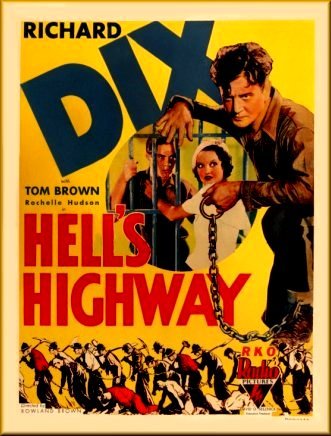
Great 1932 pre-Code prison movie with some truly brutal content (prisoners dying in a claustrophobic metal box where they hang by their neck in the 100-plus degree heat) plus some truly surprising content, including an obviously gay prisoner and some impromptu musical numbers involving the African-American chain gang members. It's an RKO Picture, which means the guys running the chain gang are corrupt, but the system itself is just and noble. In a Warner Bros. movie of the same era, the whole system would be diseased and evil, straight to the top. (By the way, I've always like Richard Dix, whether in this movie, in the "Whistler" films or in Val Lewton's "Ghost Ship" -- and he gets a name-check in "Blazing Saddles"!)
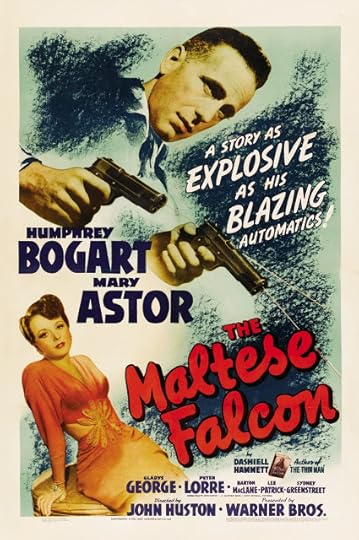
Re-watched it because I had just read Dashiell Hammett's novel for the very first time. I was surprised how closely John Huston's script stuck to the book (though the relationship between Joel Cairo, Wilmer Cook and Kaspar Gutman is a little less oblique in the novel, if you know what I mean.) Even more surprising? The line about "the stuff that dreams are made of" is nowhere to be found in Hammett's prose. The book is excellent, by the way, and the movie is really one of the best Hollywood ever produced -- but you knew that already. (Also, check out that poster -- that shot of Humphrey Bogart is obviously from "High Sierra," which was released a few months before "The Maltese Falcon.")
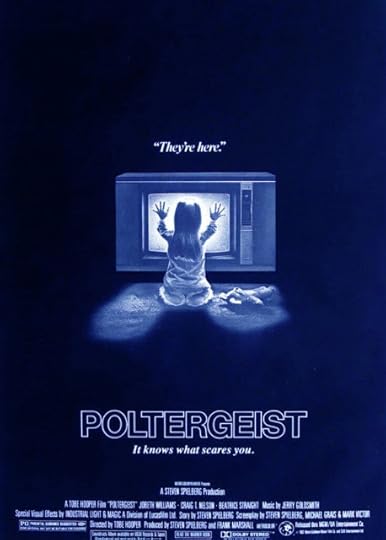
We showed this one to Allie, figuring it's a good training-wheels horror movie to get her started before moving on to, say, "Texas Chainsaw Massacre" or "Suspiria.") Still holds up nicely, and though it's not exactly scary, it is a fun roller coaster ride that knows just how to pace its scares. (Allie, of course, was completely grossed out by the scene where the guy peels off his own face.)
Up next: Albert Brooks' excrutiating examination of romance, the latest "Mission: Impossible" flick and a jaw-droppingly strange bit of '60s sleaze

Great 1932 pre-Code prison movie with some truly brutal content (prisoners dying in a claustrophobic metal box where they hang by their neck in the 100-plus degree heat) plus some truly surprising content, including an obviously gay prisoner and some impromptu musical numbers involving the African-American chain gang members. It's an RKO Picture, which means the guys running the chain gang are corrupt, but the system itself is just and noble. In a Warner Bros. movie of the same era, the whole system would be diseased and evil, straight to the top. (By the way, I've always like Richard Dix, whether in this movie, in the "Whistler" films or in Val Lewton's "Ghost Ship" -- and he gets a name-check in "Blazing Saddles"!)

Re-watched it because I had just read Dashiell Hammett's novel for the very first time. I was surprised how closely John Huston's script stuck to the book (though the relationship between Joel Cairo, Wilmer Cook and Kaspar Gutman is a little less oblique in the novel, if you know what I mean.) Even more surprising? The line about "the stuff that dreams are made of" is nowhere to be found in Hammett's prose. The book is excellent, by the way, and the movie is really one of the best Hollywood ever produced -- but you knew that already. (Also, check out that poster -- that shot of Humphrey Bogart is obviously from "High Sierra," which was released a few months before "The Maltese Falcon.")

We showed this one to Allie, figuring it's a good training-wheels horror movie to get her started before moving on to, say, "Texas Chainsaw Massacre" or "Suspiria.") Still holds up nicely, and though it's not exactly scary, it is a fun roller coaster ride that knows just how to pace its scares. (Allie, of course, was completely grossed out by the scene where the guy peels off his own face.)
Up next: Albert Brooks' excrutiating examination of romance, the latest "Mission: Impossible" flick and a jaw-droppingly strange bit of '60s sleaze
Published on September 30, 2018 15:37
August 31, 2018
Movies I Watched in July, Part 3
Finishing up the July recap on the very last day of August, which feels both lazy and fitting at the same time. The twist this time around? All three movies are, relatively speaking, brand-spanking new. So let's make this quick ...
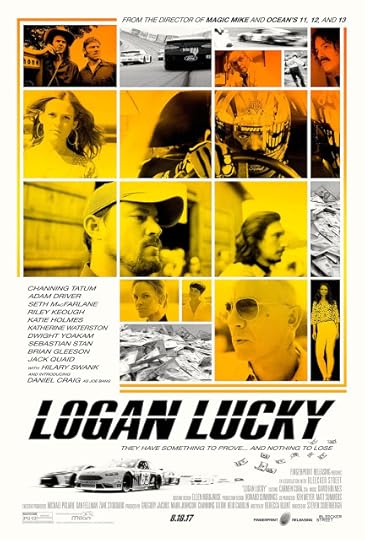
Steven Soderbergh returns to the heist themes of his "Ocean's" movies, relocatng the action to a NASCAR racetrack but, thankfully, bringing along the same sense of style and smarts. The cast is solid, too, with Channing Tatum and Adam Driver playing the titular Logan brothers, Daniel Craig slipping out of the Bond tux to play demolitions expert Joe Bang, Jim O'Heir (Jerry from "Parks and Rec") as Tatum's boss and other, smaller roles filled out by folks like Katie Holmes, Riley Keough (Elvis' granddaughter!), Seth MacFarlane, Dwight Yoakam and, showing up out of nowhere near the end, Hilary Swank. The script sets up a situation, throws in complications, gets us to like our characters, pulls a few big switcheroos and then throws everything into motion until the end, when it turns out what we thought we were seeing isn't quite what we were actually seeing. Definitely worth a look.
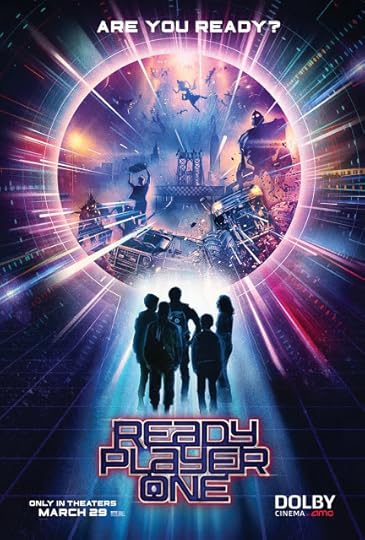
I hated the book, which read like the worst combination of by-the-numbers nostalgia and lack of consequences ever put to paper. But, given the visual possibilities hinted at in Ernest Cline's leaden prose and the potential Roger Rabbit-esque thrills of seeing all that intellectual property in a single movie, I actually had hopes for the film version, especially with Steven Spielberg at the helm. Thankfully, it wasn't as bad as the book (which, admittedly, would've been some kind of achievement) but it never hit the bizarre heights I was, against all odds, hoping it would achieve. There are some fun visuals, and I'd be lying if I didn't admit to getting a kick of out seeing the Doc Brown's DeLorean, the Iron Giant and the hotel from "The Shining" on the screen again -- but it was all so frenetic and jam-packed that I could never really take it all in and enjoy it. (I mean, "Who Framed Roger Rabbit?" felt overwhelming back in the day, but now, 30 years later, it feels positively genteel in comparison.) And the plot? Well, it is what it is, and things are improved a bit from the book, but even if you haven't read the story, I'm guessing you'll find few surprises. It's not bad, not exactly, but not the mind-blowing, world-building experience I was hoping (again, against all odds) it would be. In the film's defense, my 13-year-old daughter -- who didn't read the book and doesn't know much of this pop culture -- really, really enjoyed it. Something about it really spoke to her -- so maybe I'm the one missing the point? I'm willing to consider the possibility. (But the book still stinks.)
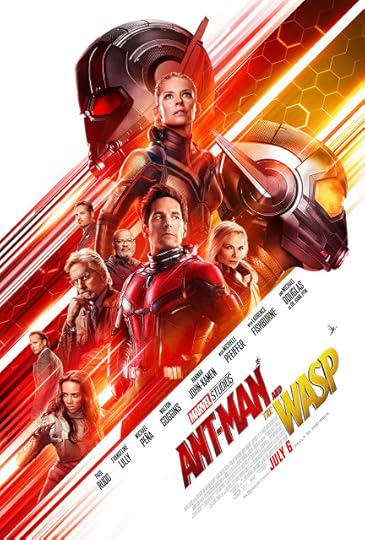
Speaking of my daughter, her favorite Marvel movie is "Ant Man," so she was even more jazzed about this one than this year's "Infinity War." Thankfully, it's a fine follow-up to the original, taking the elements that worked the first time around -- the romantic banter, random objects and people changing sizes, Michael Pena being funny-- and amping them up even more. And, like "Ant Man," it's more of a comedy with action elements than a by-the-numbers superhero epic. (Frankly, it's exactly what the Marvel franchise needed after the entertaining excesses of "Infinity War.") About the only fault I could find is the movie just sort of ends at a certain point, and the villain, though pretty interesting, isn't used as well as she could be. Also, if you're going to cast Laurence Fishburne as the past-his-prime Black Goliath, give us at least one flashback of him in action -- and in costume!

Steven Soderbergh returns to the heist themes of his "Ocean's" movies, relocatng the action to a NASCAR racetrack but, thankfully, bringing along the same sense of style and smarts. The cast is solid, too, with Channing Tatum and Adam Driver playing the titular Logan brothers, Daniel Craig slipping out of the Bond tux to play demolitions expert Joe Bang, Jim O'Heir (Jerry from "Parks and Rec") as Tatum's boss and other, smaller roles filled out by folks like Katie Holmes, Riley Keough (Elvis' granddaughter!), Seth MacFarlane, Dwight Yoakam and, showing up out of nowhere near the end, Hilary Swank. The script sets up a situation, throws in complications, gets us to like our characters, pulls a few big switcheroos and then throws everything into motion until the end, when it turns out what we thought we were seeing isn't quite what we were actually seeing. Definitely worth a look.

I hated the book, which read like the worst combination of by-the-numbers nostalgia and lack of consequences ever put to paper. But, given the visual possibilities hinted at in Ernest Cline's leaden prose and the potential Roger Rabbit-esque thrills of seeing all that intellectual property in a single movie, I actually had hopes for the film version, especially with Steven Spielberg at the helm. Thankfully, it wasn't as bad as the book (which, admittedly, would've been some kind of achievement) but it never hit the bizarre heights I was, against all odds, hoping it would achieve. There are some fun visuals, and I'd be lying if I didn't admit to getting a kick of out seeing the Doc Brown's DeLorean, the Iron Giant and the hotel from "The Shining" on the screen again -- but it was all so frenetic and jam-packed that I could never really take it all in and enjoy it. (I mean, "Who Framed Roger Rabbit?" felt overwhelming back in the day, but now, 30 years later, it feels positively genteel in comparison.) And the plot? Well, it is what it is, and things are improved a bit from the book, but even if you haven't read the story, I'm guessing you'll find few surprises. It's not bad, not exactly, but not the mind-blowing, world-building experience I was hoping (again, against all odds) it would be. In the film's defense, my 13-year-old daughter -- who didn't read the book and doesn't know much of this pop culture -- really, really enjoyed it. Something about it really spoke to her -- so maybe I'm the one missing the point? I'm willing to consider the possibility. (But the book still stinks.)

Speaking of my daughter, her favorite Marvel movie is "Ant Man," so she was even more jazzed about this one than this year's "Infinity War." Thankfully, it's a fine follow-up to the original, taking the elements that worked the first time around -- the romantic banter, random objects and people changing sizes, Michael Pena being funny-- and amping them up even more. And, like "Ant Man," it's more of a comedy with action elements than a by-the-numbers superhero epic. (Frankly, it's exactly what the Marvel franchise needed after the entertaining excesses of "Infinity War.") About the only fault I could find is the movie just sort of ends at a certain point, and the villain, though pretty interesting, isn't used as well as she could be. Also, if you're going to cast Laurence Fishburne as the past-his-prime Black Goliath, give us at least one flashback of him in action -- and in costume!
Published on August 31, 2018 13:45
August 27, 2018
Movies I Watched in July, Part 3
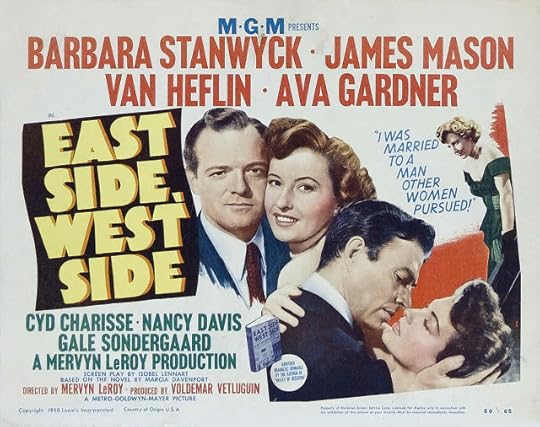
So-so “woman’s picture” (as they used to call them) with Barbara Stanwyck playing a rich socialite and James Mason playing the younger weasel who married her for her money -- but is more than happy to fall (back) into the arms of Ava Gardner, who almost wrecked their marriage a few years earlier. Into that soapy mix steps none other than Van Heflin, playing a spy (!) who spurns his young girlfriend, Cyd Charisse (!!) and falls in love with Stanwyck (!!!). Eventually, Gardner ends up murdered, and the suspicion falls squarely on Stanwyck and then … well, to be honest, I can’t remember what happened or how it ended, despite only seeing it about a month ago. It’s not a bad movie, not exactly, but there’s nothing plotwise to set it apart. I can only recommend it for the cast, which is pretty amazing. Besides the actors I’ve already mentioned (Stanwyck, Gardner and Mason are damned good), “East Side, West Side” also includes Nancy Davis (aka Nancy Reagan) as Stanwyck’s pal, William Frawley as a bartender and the great William Conrad as a cop.
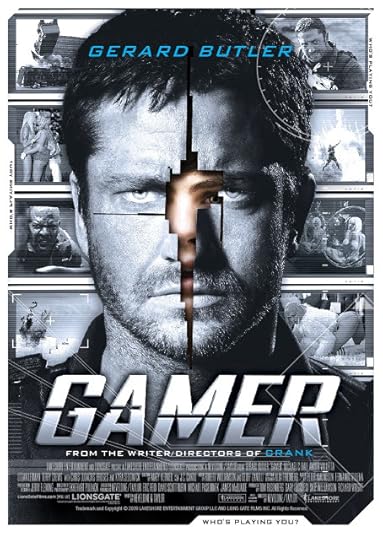 Somehow, when I watched this movie, I missed realizing it was from Mark Neveldine and Brian Taylor, the jokers behind the “Crank” films. That explains a lot – mostly how a movie with a premise that is pretty wonky from the outset (convicted criminals act as avatars in real-life video games) could go off in so many (even more bizarre) directions. Gerald Butler plays Kable, the wrongly convicted (of course) prisoner fighting to survive 30 gaming sessions to win his freedom. Butler is fine in the likeable lunkhead role, but the movie is stolen by Michael C. Hall, the Steve Jobs-like genius behind the deadly game (which is called “Slayers”). Hall hams it up wonderfully, embracing his villainy in every scene, going to far to sing and dance along to Cole Porter in what amounts to a full-scale musical number. And believe me, that’s only scratching the surface of the strangeness of “Gamer.” There’s also another game, a Second Life-like virtual playground called "Society" where average schmoes (including Kable’s wife) get paid to act as the living, breathing avatars for people hooked up to virtual reality rigs. (Kable’s wife, played by ex-model Amber Valletta, is the avatar of a disgustingly obese couch potato who apparently gets his kicks putting her in weird sexual situations – like I said, it’s a strange movie.) Besides all this brightly (blindingly?) colored mayhem, “Gamer” also delivers “Brooklyn 99” actors Terry Crews (naked!) and Kyra Sedgwick, Ludacris (as the leader of the resistance) and a scene where Kable drinks gasoline then urinates into the fuel tank of his escape vehicle. I don’t know it “Gamer” is actually good, but it’s definitely memorable. That’s gotta count for something, right?
Somehow, when I watched this movie, I missed realizing it was from Mark Neveldine and Brian Taylor, the jokers behind the “Crank” films. That explains a lot – mostly how a movie with a premise that is pretty wonky from the outset (convicted criminals act as avatars in real-life video games) could go off in so many (even more bizarre) directions. Gerald Butler plays Kable, the wrongly convicted (of course) prisoner fighting to survive 30 gaming sessions to win his freedom. Butler is fine in the likeable lunkhead role, but the movie is stolen by Michael C. Hall, the Steve Jobs-like genius behind the deadly game (which is called “Slayers”). Hall hams it up wonderfully, embracing his villainy in every scene, going to far to sing and dance along to Cole Porter in what amounts to a full-scale musical number. And believe me, that’s only scratching the surface of the strangeness of “Gamer.” There’s also another game, a Second Life-like virtual playground called "Society" where average schmoes (including Kable’s wife) get paid to act as the living, breathing avatars for people hooked up to virtual reality rigs. (Kable’s wife, played by ex-model Amber Valletta, is the avatar of a disgustingly obese couch potato who apparently gets his kicks putting her in weird sexual situations – like I said, it’s a strange movie.) Besides all this brightly (blindingly?) colored mayhem, “Gamer” also delivers “Brooklyn 99” actors Terry Crews (naked!) and Kyra Sedgwick, Ludacris (as the leader of the resistance) and a scene where Kable drinks gasoline then urinates into the fuel tank of his escape vehicle. I don’t know it “Gamer” is actually good, but it’s definitely memorable. That’s gotta count for something, right?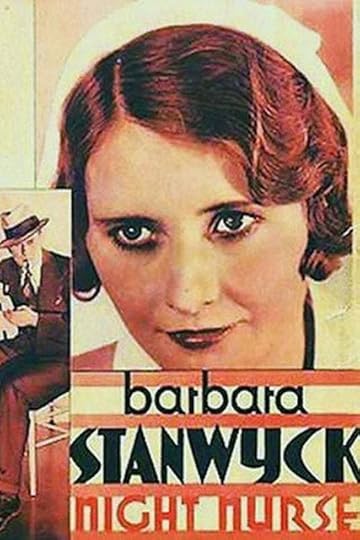
Decades older and a lot simpler than “East Side, West Side,” “Night Nurse” is also a thousand times more entertaining. Stanwyck, so young I don’t think she’s had her teeth fixed yet, plays a tough-as-nails dame who falls backwards into a nursing career (with the help of the great Joan Blondell) and then meets a heart-of-gold bootlegger who helps her save the lives of two children dealing with a dipsomaniac mom and a murderous chauffeur (Clark Gable, in his pre-mustache days). It’s the epitome of an early Warner Bros. pre-Coder, with a gangster as a good guy, plenty of wild drinking and debauchery, and more than a few scenes of Stanwyck and Blondell stripping down to their skivvies for no good reason (except for the obvious ones). Stanwyck is great – funny and bold – and you can see why she became a huge star. You can also see why director William Wellman had a long career: This movie, despite its ramshackle plot, is never boring, and it packs a breathtaking amount of action into a mere 72 minutes. TCM shows it fairly often – be sure to check it out the next time they do. You won’t regret it.
Up next: We wrap up July with three actual movies from the 21st century!
Published on August 27, 2018 16:37
August 24, 2018
Movies I Watched in July, Part 2
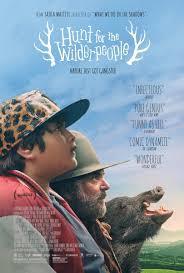
I’d heard great things about “Hunt for the Wilder People,” and as a big fan of writer/director Taika Waititi’s work on “What We Do in the Shadows,” “Thor: Raganarok” and, of course, “Flight of the Conchords,” I figured it might be right up my alley – plus the sort of semi-family friendly film we could watch with the kid. Thankfully, I turned out to be right on all counts. It’s a smart, sharp comedy with just the right dash of serious themes and dark moments, and it had both the slapstick humor and the likeable kid protagonist (played by Julian Dennison) to keep Allie entertained. The plot is suitably simple: Dennison plays Ricky, a troubled foster kid (though, admittedly, not too troubled) who gets placed with Bella and Hec (Rima Te Wiata and Sam Neill), an older couple living near the New Zealand bush. Things happen (that I won’t get into here) and Ricky and Hec flee into the bush, with child services hot on their tail. Soon, the mismatched duo become a national sensation, and Ricky and Hec have to find a way to return to civilization without Ricky getting tossed even deeper into the system. It’s very funny, it moves beautifully, the scenery is magnificent and Dennison and Neill make a truly great screen duo. (Neill is especially good in a role that doesn’t go quite where you think it might.) There are so many terrible comedies out there – especially ones featuring cutesy, insufferable kids. Do yourself a favor and check this one out. And then thank me.
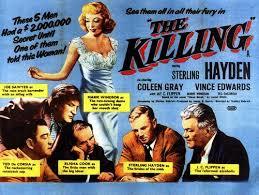
“Paths of Glory” (review here) inspired me to watch some more early Kubrick, so I popped in this film noir, the time-shifting heist pic that put Stanley on the map. It’s still a spectacular, surprising movie, even 66 years after it first his theaters. The cast is stellar, the script is brilliant and the final twist is deliciously nasty, but this time around what I loved most were the locations – the down-market racetrack, the crappy hotels, the vintage airport and especially the parlor where guys could play chess or checkers for 15 cents and hour. I want a whole movie about that joint!
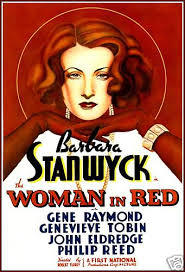
Not to be confused with that dumb Gene Wilder comedy from 1984. This movie, made 49 years earlier, stars Barbara Stanwyck as a horse wrangler who gets involved with a bunch of rich swells, marries one of them, and eventually shows them all up. It’s not one of Stanwyck’s best movies – in fact, it’s not very good at all – but Stanwyck is very good in it. She can’t push the envelope like she does in “Night Nurse” or “Babyface,” which were made a few years earlier before the Production Code put a stop to all the fun (this was made right after), but she has her moments and completely shows up the rest of the comparatively dull cast. There’s one moment, mid-movie, where Stanwyck has a reaction shot that, while simple and easily missed, proves she was playing the game on a different level than anyone else in this movie – and most everyone else in Hollywood, for that matter. As mediocre as “The Woman in Red” is, it finally convinced me that Stanwyck is my favorite actress of all time. Even in a bad movie, she’s top-notch.
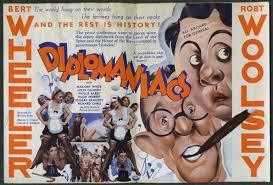
Hoo boy. Released about six months before “Duck Soup,” that other insane satire of international politics, this Wheeler and Woolsey romp isn’t nearly as good, but it is almost as jaw-dropping. The boys start the film as barbers on an Indian reservation (the joke being that Native American’s don’t grow facial hair) but are soon sent to Geneva (by the chief!) to represent the tribe at the peace conference. But an arms dealer (played by Louis Calhern, who also starred in “Duck Soup”) wants to stop them from stopping the (profitable) war, which leads to oddball seductions, assassination attempts and other assorted hijinks. It’s all pretty entertainng in a nutty, naughty (pre-Code, this being 1933) way, and if Wheeler and Woolsey’s patented banter isn’t exactly funny, it’s always interesting – and frequently surprising. Plus, this movie is a genuine historical artifact in the sense that it’s packed with racial content you could NEVER get away with today: The tribe at the beginning is (no surprise here) all played by white guys in makeup, and Warner Bros. stalwart Hugh Hubert has a major supporting role as a Chinese fellow named, er, “Chinaman.” But the real jaw-dropper is saved for the end: When a bomb is detonated at the peace conference, all the formerly white characters (including our two heroes) are instantly converted to blackface, and a big musical number commences, “Are You Ready for the Judgement Day.” It’s offensive, sure, on any number of levels, but as I watched I couldn’t help but wonder how much insane effort went into this scene – the women are sporting black body paint, too. It’s beyond crazy, and a great example of what the good ol’ days were really like sometimes.
Up next: Two more Stanwycks and the goofiest modern movie I've seen in a while
Published on August 24, 2018 05:49
August 20, 2018
Movies I Watched in July, Part 1
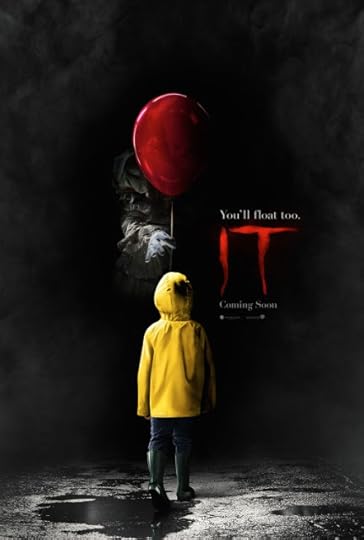
Not the old (terrible) one, the new (mediocre) one. It’s a bit better than the 1990 TV mini-series, which has obviously coasted on the fumes of nostalgia for a few decades now. (Like I said a couple of sentences ago, it’s terrible.) But I still don’t think this new movie is actually good in any objective sense of the word. The story is OK, I supposed, but the theme of ancient evil reaching out to target a group of kids should have a lot more power than it (har har) manages to generate here. Sure, there are some effective moments of dread, but all the actual horror elements seem to revolve around clichéd (and decidedly un-scary) jump scares and, let’s be honest, creepy clowns aren’t creepy anymore – if they ever were. I know audiences loved this one, and critics seemed to fall for it, too, but it just didn’t work for me. Sorry.
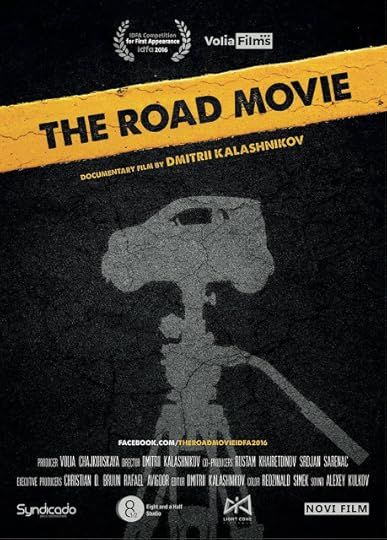
I don’t know if "The Road Movie" actually counts as a movie, despite the prominent use of the word in the title, but what "The Road Movie" lacks in plot, acting, dialogue, cinematography, and all the other elements of motion pictures, it makes up for in sheer batshit-crazy entertainment. Consisting completely of footage from Russian dashcams, it’s 67 minutes of drunken fights, crashes (also often drunken), chases, animal encounters, foolhardy stunts, and, in one genuinely unforgettable and almost transcendent moment, a terrifying drive through a forest fire. It’s not deep, and it’s not clever, but "The Road Movie" is rarely boring, and I can honestly say I’ve never seen anything quite like it.
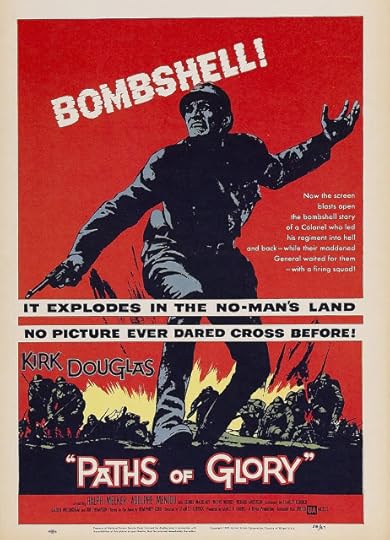
I picked this one up during the last Criterion sale at Barnes & Noble because it was the lone remaining Kubrick film I was still missing -- and really, any video collection (or at least mine) needs to have the full run of Kubrick, right? I hadn't seen "Paths of Glory" in a few years, and I'm happy to say it's even better than I remembered. It's early Kubrick, sure, before he was really stretching the medium, but this is really a masterful work, moving from hellish trenches to cold-blooded courtrooms, generating both unbearable tension and righteous anger, all centered around a performance by Kirk Douglas as his Kirk Douglas-iest. As a bonus, the cast also includes Ralph Meeker, Joseph Turkel (who would later show up in "The Shining"), Adolph Menjou and George Macready (as the real villains of the piece), and Timothy Carey (who apparently got himself fired and had to be replaced by a double in one scene). If the greatness of "Paths of Glory" isn't evident by the time the main story winds up, it becomes indisputable during the film's breathtaking coda: Some of the surviving troops visit a tavern where a terrified German girl is brought ontstage to perform for their pleasure. As she sings, their hoots and hollers grow silent and the men are deeply touched by her humanity -- and their own. Then there's one more inevitable punch in the gut before the credits roll. (The singer, as you may have heard, was played by a young actress named Susanne Christian -- who fell in love with her director and soon became known as Christiane Kubrick.)
Up next: A great New Zealand comedy, more Kubrick and yet another obscure oldie.
Published on August 20, 2018 19:22
Will Pfeifer's Blog
- Will Pfeifer's profile
- 23 followers
Will Pfeifer isn't a Goodreads Author
(yet),
but they
do have a blog,
so here are some recent posts imported from
their feed.



